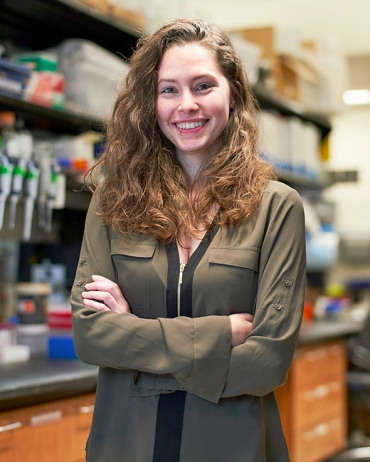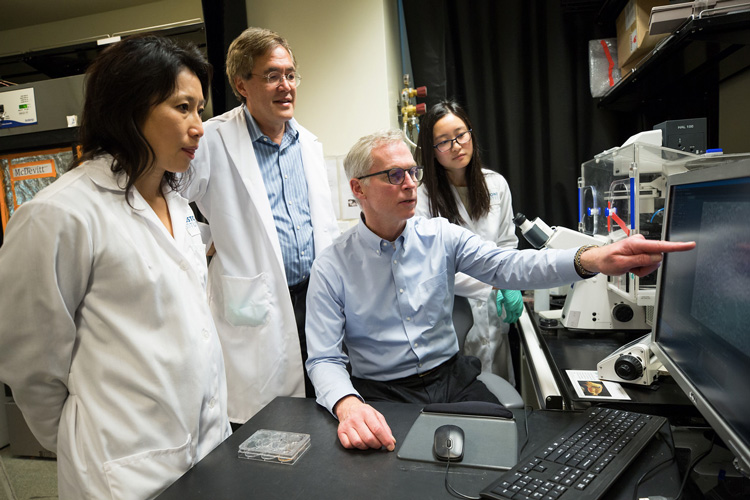CRISPR opens door to new type of medicine: ‘genome surgery’
Within a few years, Jim Johnsen and Delaney Van Riper may be among the first to benefit from CRISPR-Cas9 gene editing, a breakthrough that has already revolutionized biology research and promises to resurrect gene therapy.
UC San Francisco doctors working closely with UC Berkeley scientists plan to edit their genomes to correct rare genetic mutations and slow or halt progression of their diseases.
If successful, the trials will inaugurate a new era of “genome surgery” — the precision targeting of genetic defects in the genome, using CRISPR-Cas9 customized to individual patients. Such “bespoke” therapies can benefit small groups of individuals or families with particular genetic defects that would never be addressed by large pharmaceutical companies.
Johnsen and his family, including his daughter Greta, are carriers of a rare disorder, Best disease, that afflicts perhaps a thousand people nationwide and leads to early vision loss and eventual blindness, much like the more common macular degeneration.

Van Riper was born with a rare disease called Charcot-Marie-Tooth, which gradually destroys her nerve cells’ ability to relay messages between her brain and muscles, causing her to slowly lose control of her limbs and her muscles to waste.
CRISPR-Cas9, invented at UC Berkeley, could make treating such diseases, if not easy, at least straightforward: with a large enough CRISPR toolbox, doctors can pick and choose the best approach and tailor a therapy to the specific genetic mutation.
“Imagine a world where people go to the doctor, and they get their genome sequenced and learn they have a genetic disorder,” says CRISPR-Cas9 inventor Jennifer Doudna, who pioneered the first CRISPR applications in her UC Berkeley lab in 2012. “And instead of telling them they need to live with that disorder, we have the technology that can actually treat them – potentially even cure them.”
Doudna is quoted in an article that highlights the collaboration among scientists in the Innovative Genomics Institute, a joint UCSF/UC Berkeley research initiative that seeks to expand the CRISPR toolbox and make CRISPR-Cas9 gene editing more precise, more effective and safer. Doudna is IGI’s executive director, and is also a Howard Hughes Medical Institute investigator and Berkeley professor of molecular and cell biology and of chemistry.

While Johnsen and Van Riper have yet to be treated, both have donated their cells to Bruce Conklin at UCSF, where they have been coaxed into becoming stem cells that are now being treated with CRISPR-based gene therapy to, ideally, correct their mutations. Once this is successful in the lab, the stem cells will be injected into the eye, in Johnsen’s case, or muscles, in Van Riper’s case, in hopes of alleviating their symptoms.
The researchers acknowledge that Best disease and CMT are simpler targets than many genetic diseases: both are caused by single nucleotide changes in a single gene, making it simpler to fix; and the symptoms occur in tissues that are relatively easy to access. Nevertheless, treatments like this will pave the way for treating more complex genetic diseases.
“Almost universally, the first targets of genome surgery will be incurable diseases, where there is truly no other option,” says Conklin, a senior investigator at the Gladstone Institutes, UCSF professor of medicine and deputy director of IGI. “If we can treat these, it will open the door to a new type of medicine.”
